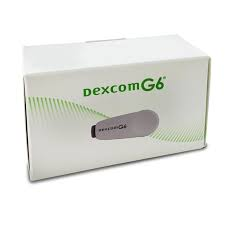Navigating the world of continuous glucose monitoring (CGM) can be daunting, especially when it comes to understanding the cost of essential components like Dexcom G6 sensors. For individuals managing diabetes, Dexcom G6 sensors offer valuable insights into their glucose levels, helping them make informed decisions about their health. However, the cost of these sensors can vary depending on insurance coverage and other factors. In this comprehensive guide, we’ll delve into the intricacies of Dexcom G6 sensor costs with insurance coverage, providing clarity and insight for individuals seeking this vital information.
Understanding Dexcom G6 Sensors
Before delving into the cost aspect, it’s essential to understand what Dexcom G6 sensors are and how they function. Dexcom G6 is a continuous glucose monitoring system designed to provide real-time glucose readings every five minutes, without the need for fingerstick calibration. The system consists of a small sensor that is inserted subcutaneously, typically on the abdomen and a transmitter that sends data wirelessly to a receiver or compatible smart device.
Factors Affecting Cost
The cost of Dexcom G6 sensors can be influenced by several factors, including insurance coverage, deductible requirements, co-payments, and out-of-pocket expenses. Understanding these factors is crucial for individuals seeking to manage their diabetes effectively while minimizing financial strain.
Insurance Coverage
Insurance coverage plays a significant role in determining the cost of Dexcom G6 sensors for many individuals. Some insurance plans provide comprehensive coverage for CGM systems, including sensors, transmitters, and receivers, while others may offer limited coverage or require higher out-of-pocket expenses.
Deductible Requirements
Many insurance plans have deductibles that must be met before coverage for certain medical expenses, including Dexcom G6 sensors, kicks in. Individuals may need to pay the full cost of sensors until their deductible is met, after which their insurance plan may cover a percentage of the cost.
Co-payments and Out-of-Pocket Expenses
Even with insurance coverage, individuals may still be responsible for co-payments or out-of-pocket expenses associated with Dexcom G6 sensors. These costs can vary depending on the specific terms of the insurance plan and may require individuals to budget accordingly.
Cost Breakdown
Average Cost of Dexcom G6 Sensors
The cost of Dexcom G6 sensors without insurance coverage typically ranges from $350 to $400 for a pack of three sensors. However, with insurance coverage, the out-of-pocket cost for individuals can vary significantly.
Insurance Coverage Options
Private Health Insurance
Many private health insurance plans offer coverage for Dexcom G6 sensors as part of their durable medical equipment (DME) benefits. Individuals with private insurance should review their plan’s coverage details and contact their insurance provider for specific information regarding coverage for CGM systems.
Medicare
Medicare Part B may cover certain CGM systems, including Dexcom G6, for individuals who meet specific criteria. Eligibility requirements and coverage details may vary, so Medicare beneficiaries need to consult with their healthcare provider and Medicare representatives for guidance.
Medicaid
Medicaid coverage for Dexcom G6 sensors varies by state and may be subject to specific eligibility criteria and coverage limitations. Individuals enrolled in Medicaid should contact their state Medicaid agency for information regarding coverage for CGM systems.
Cost-Saving Strategies
Manufacturer Assistance Programs
Dexcom offers assistance programs for eligible individuals to help reduce the cost of Dexcom G6 sensors. These programs may include co-pay assistance, patient support services, and other resources to make CGM technology more accessible.
Flexible Spending Accounts (FSAs) and Health Savings Accounts (HSAs)
Individuals with FSAs or HSAs may use pre-tax dollars to pay for Dexcom G6 sensors, potentially reducing their out-of-pocket expenses. Utilizing these accounts can provide tax advantages and help individuals manage their healthcare costs more effectively.
Conclusion
The cost of Dexcom G6 sensors with insurance coverage can vary depending on numerous factors, including insurance plan specifics, deductible requirements, and out-of-pocket expenses. Understanding the intricacies of insurance coverage and exploring cost-saving strategies can help individuals manage the financial aspects of continuous glucose monitoring while prioritizing their health and well-being.
FAQs (Frequently Asked Questions)
- Does insurance cover the cost of Dexcom G6 sensors?
- Insurance coverage for Dexcom G6 sensors varies depending on the individual’s insurance plan and provider. Many insurance plans offer coverage for CGM systems, but the extent of coverage may vary.
- How much do Dexcom G6 sensors cost without insurance?
- Without insurance coverage, the cost of Dexcom G6 sensors typically ranges from $350 to $400 for a pack of three sensors.
- Are there any financial assistance programs available for Dexcom G6 sensors?
- Dexcom offers assistance programs for eligible individuals, including co-pay assistance and patient support services, to help reduce the cost of Dexcom G6 sensors.
- Can Medicare cover the cost of Dexcom G6 sensors?
- Medicare Part B may cover certain CGM systems, including Dexcom G6, for eligible individuals. Specific coverage details and eligibility criteria should be confirmed with Medicare representatives.
- How can individuals save money on Dexcom G6 sensors?
- Utilizing manufacturer assistance programs, flexible spending accounts (FSAs), and health savings accounts (HSAs) are potential strategies for reducing out-of-pocket expenses associated with Dexcom G6 sensors.




